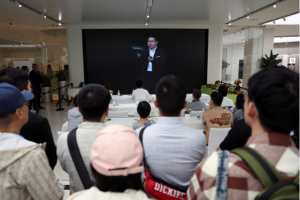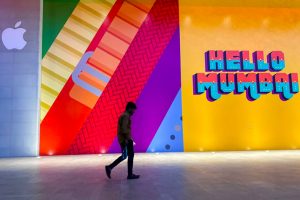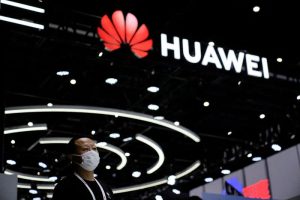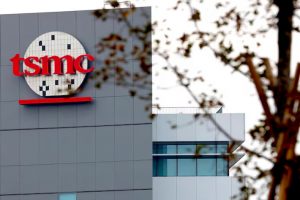South Korea was the trailblazer of fifth-generation (5G) mobile technology in 2019, when it rolled out the service that sought to fast-track the technological shift to autonomous driving and smart cities.
But three years down the line, most promises have yet to be achieved.
Some 45% of the country’s people are now on 5G, one of the highest rates globally, after some $20 billion in spending on network upgrades that have boosted connection speeds five-fold.
But telecommunications companies have not been willing to invest in the fancier technology that would ramp speeds by 20 times over 4G technology.
That is because the demand is not there yet. App makers have not brought to mass market services like autonomous driving that would require more firepower. Customers can watch Netflix and surf the net well enough with existing 5G technology.
Telcos have adapted by diversifying. To make the quantum leap to the highest-speed 5G will require the roll-out of essential services that need such fast connections.
“When households begin to have robots at their homes, for instance, telcos would then start ramping up infrastructure investments, so the highest-speed 5G will be partially available around 2025,” Kim Hyun-yong, an analyst at Hyundai Motor Securities, said.
ALSO SEE: Huawei Looks at 5G, Cloud as Path Beyond Sanctions
Plan a Shift To 5G? Wait, Not So Fast
The lesson for other countries racing toward 5G technology may be: curb your enthusiasm. The new technology holds great promise, but for now there will still be as much evolution as revolution in the high-speed internet future.
In April 2019, South Korea’s three mobile carriers – with a PR campaign featuring K-pop stars, an Olympic gold medallist – plus Verizon Communications of the United States, rushed their commercial 5G launches ahead of schedule, all keen to claim first spot in the high-profile wireless technology.
Asia’s fourth-biggest economy has remained the 5G pioneer, but the hype had begun to fade even before Covid-19 slammed demand for 5G devices. Companies have baulked at investing the estimated $370 billion needed to set up the fastest 5G, and revenue growth has stalled.
“Rolling out 5G technology that is 20 times faster is nearly impossible, even in Seoul,” said Ku Hyun-mo, CEO of South Korea’s top telecoms operator, KT Corp.
“Establishing nationwide coverage just can’t be done – 5G frequency travels straight and it can’t go around obstacles,” Ku said. “It can’t deliver the same speed once it travels a few hundred metres.”
The fastest version, using ultra-shortwave in a high-band spectrum called millimetre wave (mmWave), would require 15 to 20 base stations per square kilometre (40-50 per square mile), compared with just two to five for 4G, according to a McKinsey report.
And No Killer App, Yet
South Korean telcos have built around 215,000 5G base stations, but only 2% of them can handle mmWave. Other countries that have introduced 5G, such as the United States and China, also largely rely on the slower mid-band spectrum.
As of March, South Korea had 22.9 million 5G subscribers, just under half the number of its 4G users. By contrast, when 4G celebrated its third birthday, its users had more than doubled those of its predecessor.
“When 4G was first rolled out in 2011, data demand exploded to watch YouTube and Netflix, and users aggressively switched to 4G,” said analyst Kim. Now, though, “telcos currently lack a killer service that can generate heavier data demand” that would justify paying up for 5G he said.
In the first two to three years of 4G, carriers’ average revenue per user (ARPU) climbed 5% to 12% annually. By contrast, KT’s ARPU rose 3.7% in the first quarter from a year earlier, while that of SK Telecom Co edged up 0.6% and third-ranked LG Uplus Corp saw a 4.2 decline.
“If telcos stick with the current connectivity business, they will plateau,” KT’s Ku said.
Mobile carriers are increasingly turning their eyes to new businesses. KT is developing artificial intelligence to power call centres, hoping that business will double this year, while SK Telecom has seen a jump in revenues for cloud services and data centres.
Diversification is paying off with investors so far. SK Telecom and KT shares have risen some 26% since 5G technology rolled out, beating the broader market’s 18% rise even as ARPU growth slowed.
“From 3G to 4G, data demand increased exponentially. But at the moment, data demand is growing linearly,” Hyundai’s Kim said. “Mid-band 5G would facilitate the popularisation of 5G and serve as a bridge to the next step.”
- Reuters with additional editing by Jim Pollard
ALSO READ:
Huawei Looks at 5G, Cloud as Path Beyond Sanctions
Malaysia Maintains Sole 5G Network, Offers 70% Stake to Telcos
5G Expands to More Affordable Phones as Chip Prices Fall – WSJ
Singapore’s GIC to Invest $525m in 2 Korea Data Centres
























